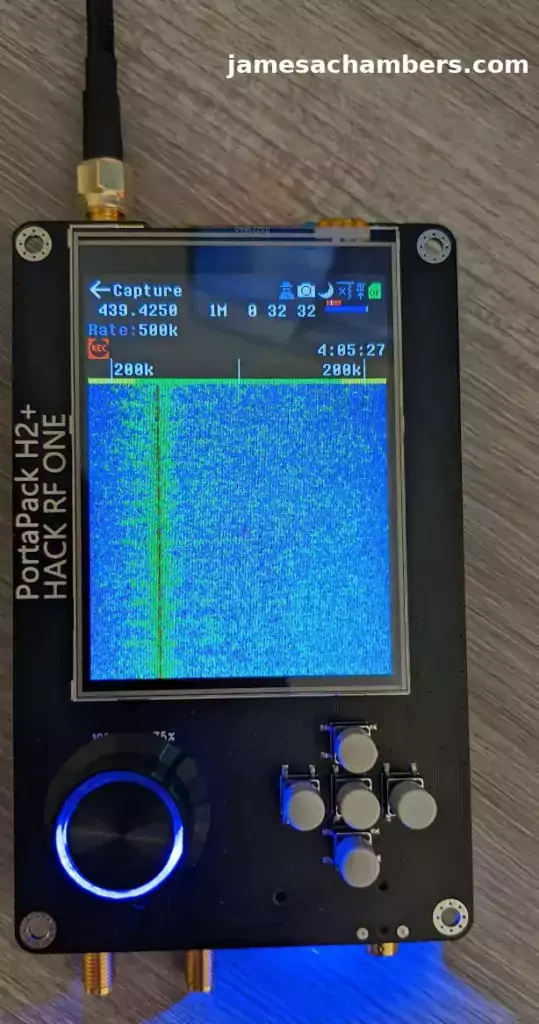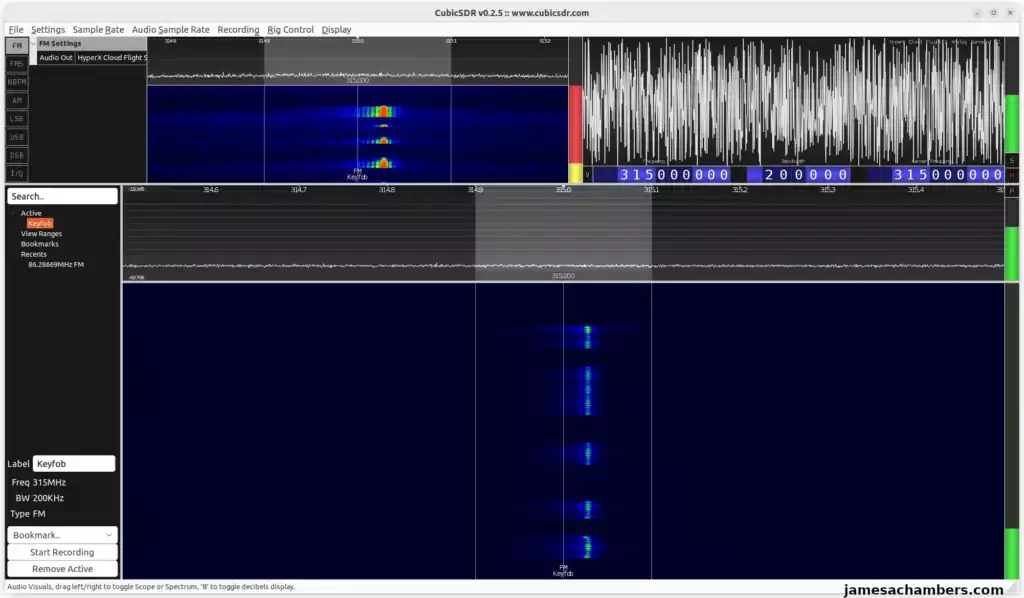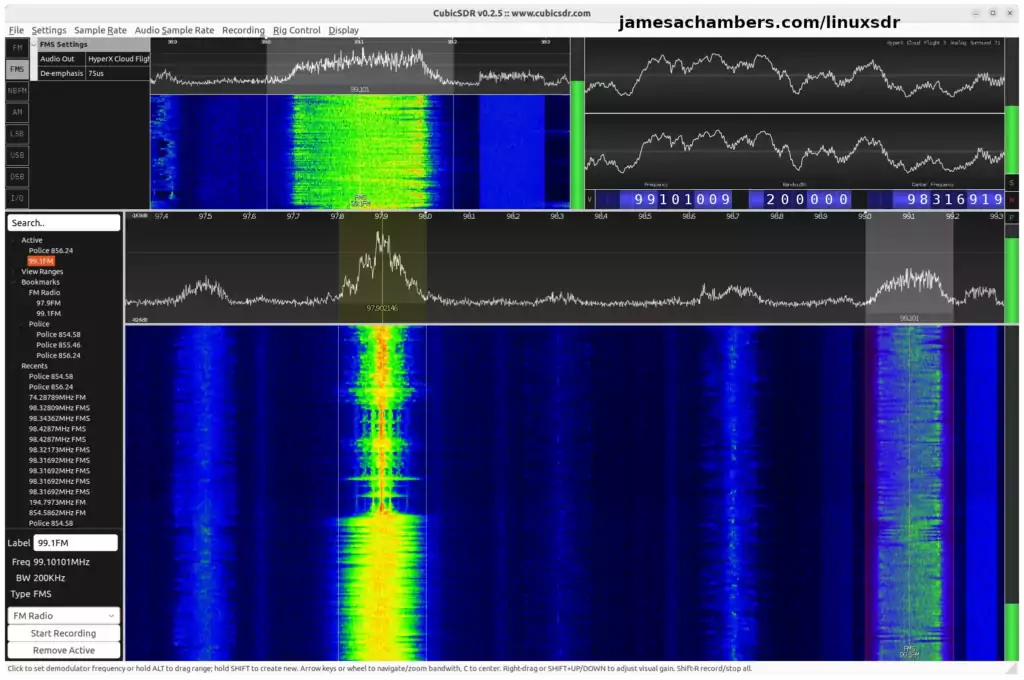The term “software defined radio” simply means that parts of a radio that were traditionally hardware are implemented in software. This means that functions that used to require knobs, dials or some kind of physical mechanism can now be controlled via software. Essentially this makes using computers/ software with radios much easier and more accessible (cheaper) than it had ever been traditionally.
Now with that background I can explain what the HackRF device is. The HackRF is a software defined radio device that is designed to let you access *all* of the radio spectrum all the way from 1 MHz up to 6 GHz! Think of it like a FM radio where the frequency controls don’t stop at 88 MHz or 108 MHz and you could turn it way below or above that. That is exactly what a HackRF is!
You are definitely not limited to listening to radio stations though. You can basically receive all types of signals with the HackRF (depending on your antenna) including video and data signals which can be processed by your computer. In this guide I’m going to cover how to get started with a device like this in Ubuntu Linux and give you an idea of what kind of things you can do with it!



